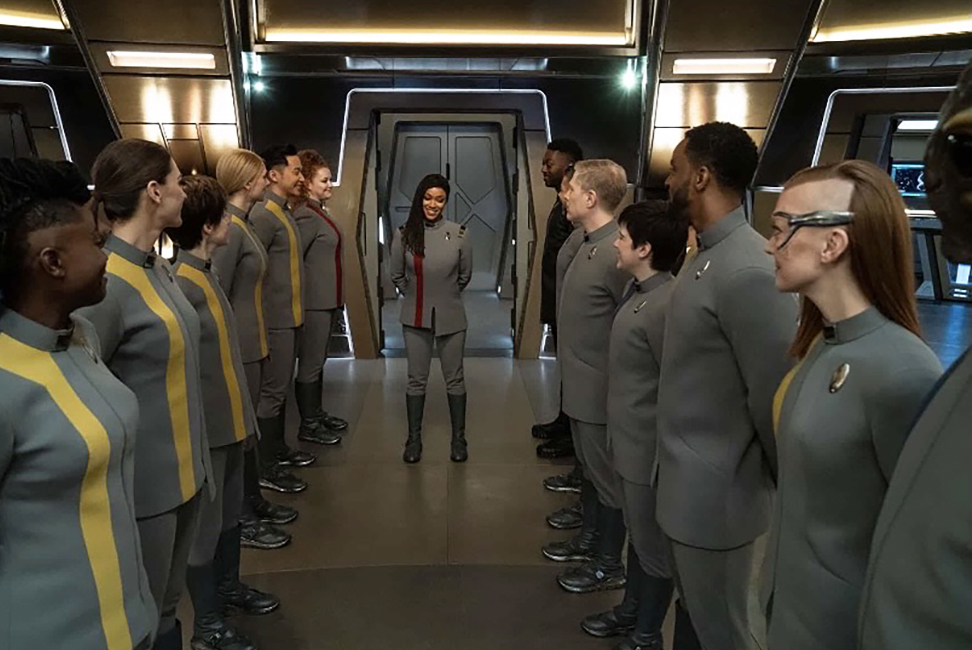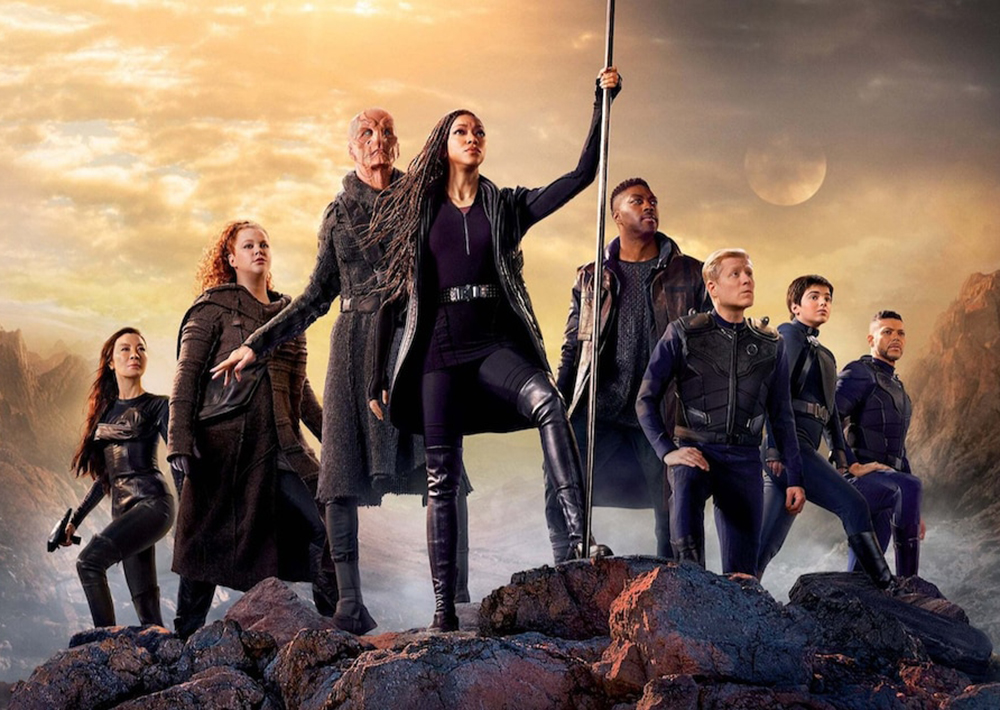Set over 900 years in the future from the original “Star Trek” series, Season 3 of “Star Trek: Discovery” follows Michael Burnham as she attempts to reunite with her crewmates and solve the mystery of ‘The Burn.’ The United Federation of Planets is in disarray; Star Fleet is a shadow of its former self and the galaxy is dominated by an extremely corrupt organisation known as The Emerald Chain.
Set further in the future than we have seen thus far, the show comes with a whole host of exciting new technology and gadgets for us to geek out over, along with exciting new planets to explore and the return of ones familiar to us. Jumping to the future was a great move by the show-runners, as it opened up a plethora of storylines to explore and new challenges to face.
The story arc is set out in a classical three-act structure over 13 episodes, with act one centering around Michael Burnham (Sonequa Martin-Green) establishing contact with her lost crew and vice versa. Act two follows the Discovery as it reestablishes contact with what is left of Star Fleet and tries to solve the mystery of ‘The Burn.’ In the final act our heroes must face off against Osyraa (Janet Kidder) and The Emerald Chain. With the whole fate of The Federation in the balance the stakes couldn’t be higher. I’ve sometimes felt like something has been missing from past seasons of the show but this isn’t the case this season. While some of the more intimate moments do feel slightly manufactured, overall the acting is fantastic and the story will take you on a rollercoaster ride of gut wrenching emotion, difficult decisions, and heartfelt moments.

What is great about this show is the sheer diversity it brings along with its message of unity and hope. We have characters in same sex relationships, we have strong female leaders, we have strong black characters. “Star Trek” has always been a show about inclusivity and portraying a future where gender, race, sexual orientation, etc. do not cause conflict or division. The show celebrates who we are, and “Discovery” is no exception to this. Adira, played by Blu del Barrio is the show’s first non-binary character and actor. Likewise Ian Alexander who plays Gray is the show’s first transgender character and actor. Television provides role models and guidance for a lot of young people and adults alike, so it is hugely important that all walks of life are represented on-screen. The show does just that.
Added to this, the show looks great visually. I’ve seen a number of shows recently where it’s been painfully obvious the characters are in a studio. I’ve even seen a painted backdrop used (which is very old school). It’s important for audiences’ enjoyment and focus that disbelief is suspended for however long the show is, because otherwise we get distracted, the story gets lost, and we don’t focus on what’s in front of us. Thankfully everything about “Discovery” looks great, including the deck of the ship, which I hugely geeked out over.
All-in-all, after the year the world has just had, “Star Trek” couldn’t have returned sooner. The series takes you through a whole range of experiences and emotions while focusing on a message of positivity, unity, and hope.
*”Star Trek: Discovery” is available to watch on Hulu, YouTube TV, CBS, fuboTV, Amazon Prime, and YouTube (subscription may be required).


